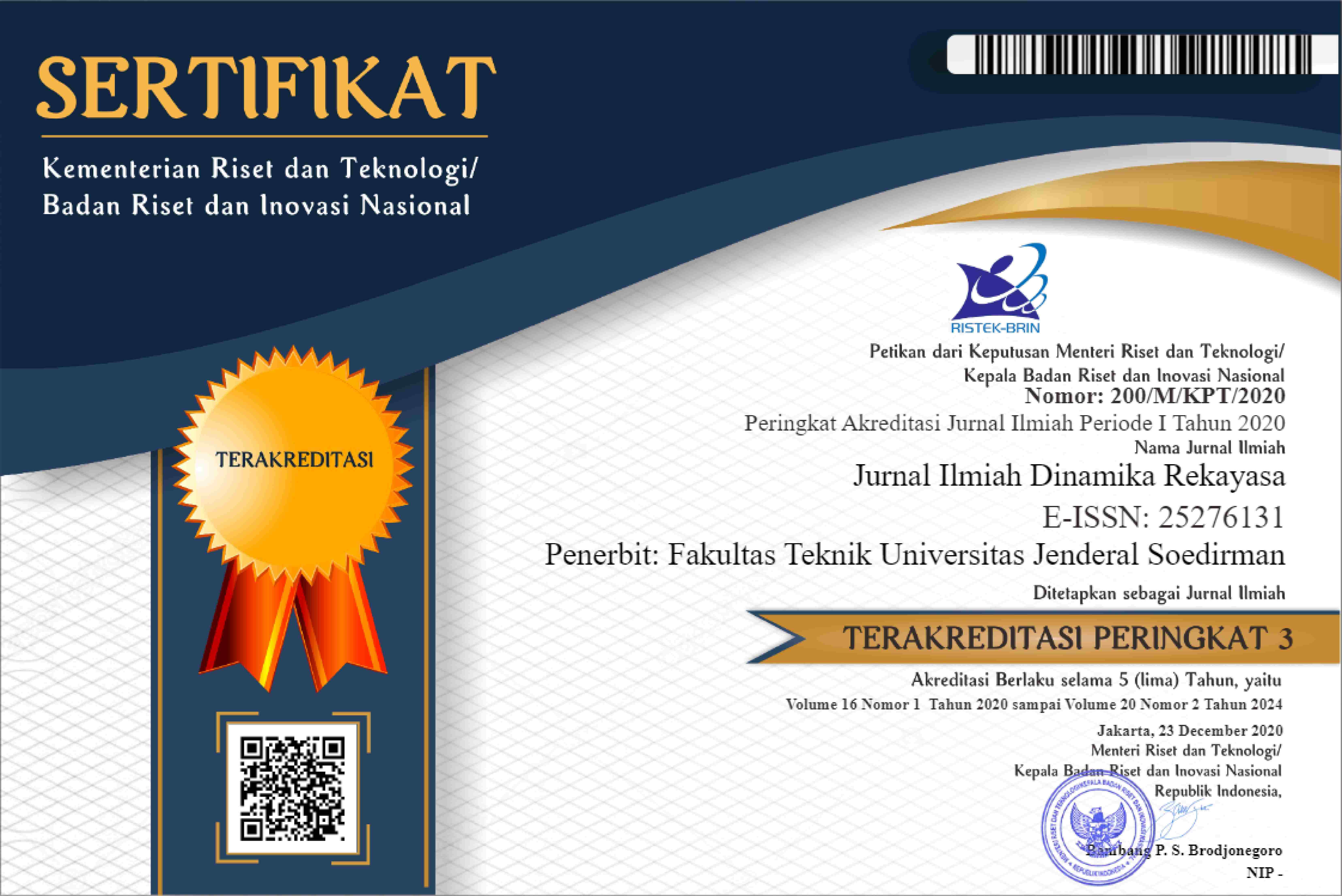Pemanfaatan Pemotongan Ban Bekas Untuk Campuran Beton Serat Perkerasan Kaku
Nastain Nastain(1*), Agus Maryoto(2)(1) Prodi Teknik Sipil Universitas Jenderal Soedirman
(2) Prodi Teknik Sipil Universitas Jenderal Soedirman
(*) Corresponding Author
Abstract
Basically, construction of road pavement has 2 (two) types, are rigid pavement and flexible pavement. Rigid pavement has many advantages: the design is simple, the maintenance is easy and it is suitable for heavy load traffic as well as for sub grade with low CBR value However, the main disadvantage of rigid pavement is its inflexibility because the flexural strength of concrete is low. To increase the flexibility of concrete, adding elastic material (waste tire) into concrete mixture is needed. This is very possible, because waste tire has high modulus of elasticity value and low density. This research is conducted to find the influence of waste tire fiber addition towards the increase of flexural strength and compressive strength of rigid pavement. This research uses tire shreds 4 mm x 4 mm x 60 in mm size which are mixed randomly into various concentrations. Concrete mechanic behaviors, flexural strength and compressive strength, are measured by testing cylinder and beam concrete specimens. The research results show that the addition of waste tire fiber can increase flexural strength of concrete up to 20.84% and compressive strength of concrete up to 4.73% higher than normal concrete when the waste tire fiber content is 0.75%.
Keywords
Full Text:
PDFRefbacks
- There are currently no refbacks.





